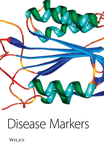A Songbird Animal Model for Dissecting the Genetic Bases of Autism Spectrum Disorder
Abstract
The neural and genetic bases of human language development and associated neurodevelopmental disorders, including autism spectrum disorder (ASD), in which language impairment represents a core deficit, are poorly understood. Given that no single animal model can fully capture the behavioral and genetic complexity of ASD, work in songbird, an experimentally tractable animal model of vocal learning, can complement the valuable tool of rodent genetic models and contribute important insights to our understanding of the communication deficits observed in ASD. Like humans, but unlike traditional laboratory animals such as rodents or non-human primates, songbirds exhibit the capacity of vocal learning, a key subcomponent of language. Human speech and birdsong reveal important parallels, highlighting similar developmental critical periods, a homologous cortico-basal ganglia-thalamic circuitry, and a critical role for social influences in the learning of vocalizations. Here I highlight recent advances in using the songbird model to probe the cellular and molecular mechanisms underlying the formation and function of neural circuitry for birdsong and, by analogy, human language, with the ultimate goal of identifying any shared or human unique biological pathways underscoring language development and its disruption in ASD.




